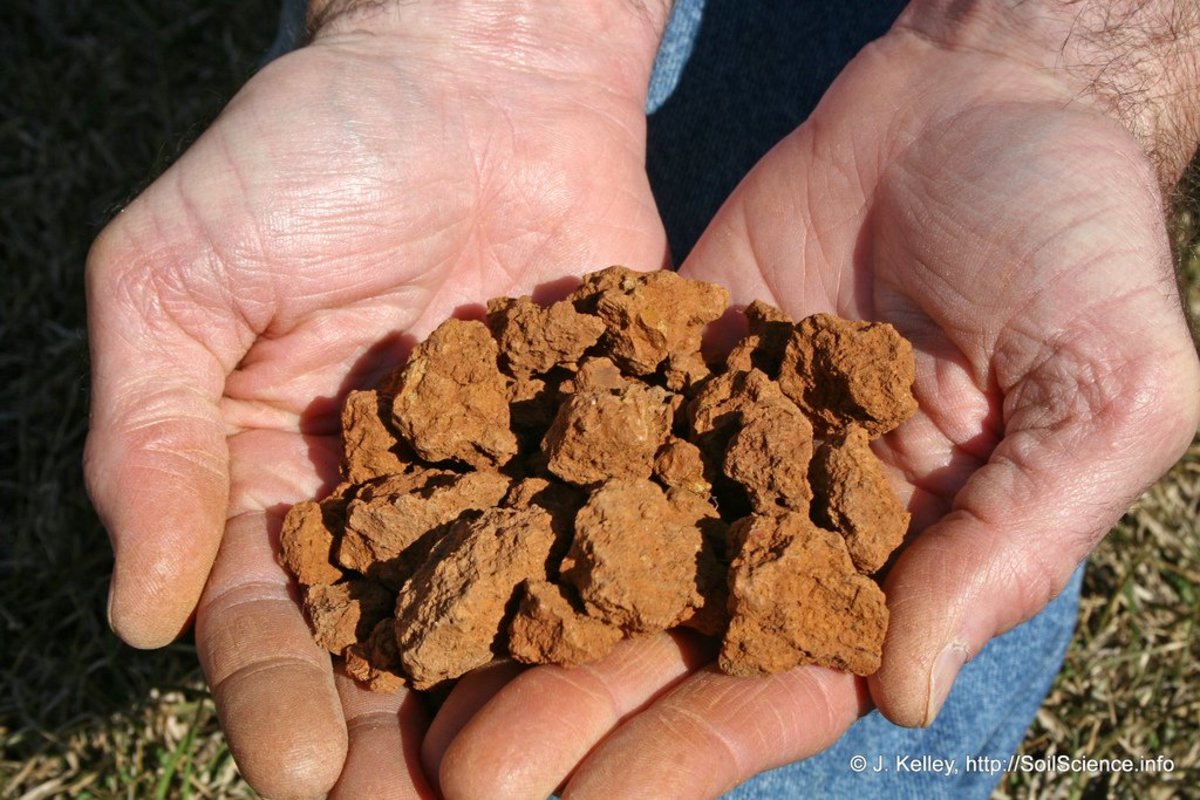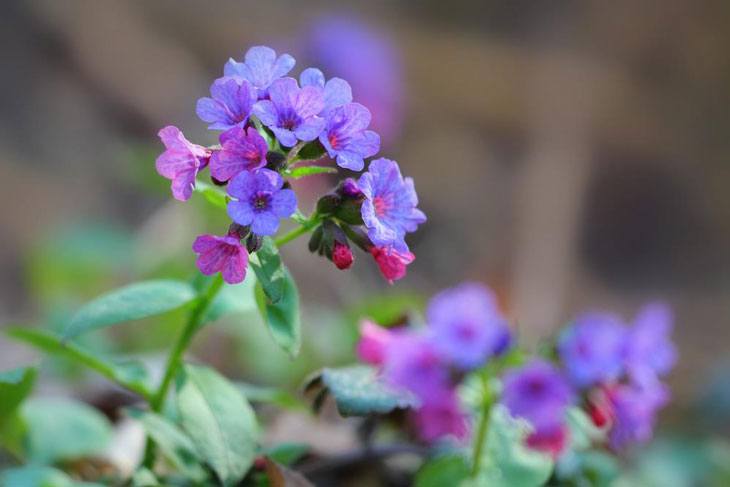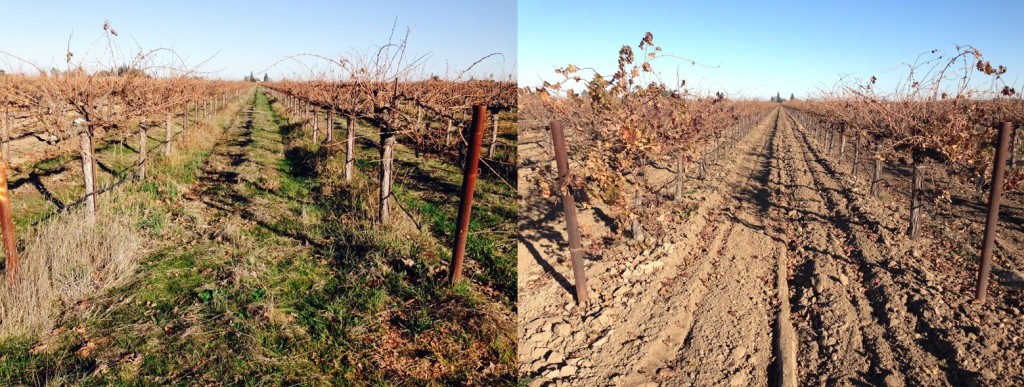In flower beds and around shallow-rooted annuals, apply mulch in 1- to 2-inch-deep layers. If you're mulching trees or woody perennials, use a 2- to 4-inch layer of mulch. Peat is particularly beneficial as an amendment for acid-loving plants in most soils. Apply peat materials to your flower bed at a rate of 3 to 4 bushels per 100 square feet. Along with adding compost, a second strategy for adding organic matter to my clay soil is cover cropping. I plant cover crops any time the beds in my garden would otherwise be unplanted or fallow.
Fallow periods provide little additional organic biomass while allowing the decomposition of organic matter in the soil to continue. They contribute to the improvements in soil structure that I described earlier. And they can smother weeds and even suppress weed seed germination. Many cover crops will also suppress pathogenic nematodes, for example root knot nematode. Good soil structure and quality help plant roots grow deeper and help the soil retain more moisture, reducing a garden's water needs.
Plants growing in quality soil have adequate nutrients so they're healthier and better able to resist pests and diseases. Fewer pests and diseases mean less need for chemical fertilizers or pesticides. Chemicals aren't necessary to ensure good flower bed soil, because most soils can be improved naturally with the addition of organic materials. However, major losses in soil organic matter content can take place when the soil is inverted or mixed annually by tillage. Extensive tillage stimulates microbial activity , and the consumption of mass quantities of organic matter ensues.
After your clay soil becomes more friable and you have provided a deep root zone for your garden plants, you should consider reducing tillage. Because the soil remains undisturbed, fertilizers and other soil amendments do not become homogenized in the tillage layer. Plant feeder roots, therefore, tend to proliferate in the top 2 inches of fertile topsoil. This nutrient-rich material serves to moderate the hardness of the mineral component. When the soil is predominantly clay or sand, the addition of organic matter makes clay soil looser, and easier to work. In clay soils, organic matter additions improve drainage, and allow air to move into the soil more readily.
In sandy soil, it helps to hold moisture and nutrients in the root zone of the lawn. Organic matter has the magical quality of being able to help both soil problems. If you want to know what it looks like, buy a bag of compost at a garden center. High-quality composts are predominantly organic matter. Clay soil is often not aerated enough and is deficient in good structure which makes it more difficult for successful growing. To get the most out of clay soil it's best to add large quantities of well-rotted organic matter in the fall and peat a few weeks before planting.
Greensand can also be used to loosen heavy clay soils or bind sandy soils. I always see things on how to work with sandy, silty, or clay soils, practically nothing on peat soils. I moved to an area this last Fall, that had a lot of glacier activity and is a meadow or grass land now. We would like to grow a garden, but we have black peat soil for about 14 feet down. I used a home soil test and found no nitrogen in the soil.
There is some phosphorus and a small amount of potassium. What should we do to our soil to be able to grow a vegetable garden and fruit trees? Organic matter such as manure helps sandy soil to retain moisture and nutrientsOrganic matter is a kind of cure-all in the garden. Any organic matter will work to build soil structure and its ability to hold onto water. Compost and manure are preferred because they are rich in nutrients, which they drip-feed to your plants. Over time, they'll also help to increase the pH of acidic sandy soils.
Rock phosphate, or rock dust, is also a valued amendment to restore phosphorus levels needed for vigorous plant growth. All organic materials will eventually decompose in soil and therefore must be renewed from time to time, especially in annual flower and vegetable beds that are continually cultivated. Clay soils benefit from organic matter too, because it improves their structure by binding clay particles into crumbs. By adding coarse sand to heavy soils you can make a permanent improvement in their texture. Spread the sand to a depth of 5–8 cm, then mix well into the topsoil to a depth of 15–20 cm. The best way to improve soil texture is by adding organic material, such as compost or peat moss.
Decaying organic matter helps sandy soil by retaining water that would otherwise drain away. And it corrects clay soil by making it looser, so air, water, and roots all can penetrate. Plus, in all soils it encourages beneficial microbial activity and provides nutritional benefits. During the initial, pre-garden phase of my soil improvement plan, I managed to break up 10 inches of hard-packed clay with endless swings of my trusty mattock. I spread compost over the surface of the beds an inch at a time and rototilled it in. I was careful not to work the clay when it was too wet, because clay worked wet can result in some tenacious clods, very reluctant in their willingness to ever come apart again.
I tried to work the compost deep into the soil, and along with it, I added lime and phosphorus, the clay soil in my garden needing both. When surface-applied, neither of these materials moves down through the soil, so incorporation to ample depth is very important to permit roots to grow into the subsoil. After 3 to 4 inches of compost, I had the "raised bed" I wanted. The best sandy soil amendments are ones that increase the ability of the sandy soil to retain water and increase the nutrients in the soil as well.
Sandy soils can usually benefit from the addition of organic material, such as well rotted manure or compost which will help the soil to retain both moisture and nutrients. Incorporating 2 inches of organic material into the top 6 inches of the soil before seeding will significantly improve the texture of soils with a high sand content. When we moved to 'rock hill', I just gave up the first year or two growing in the ground and started my new garden in tubs and buckets.
As those gardens produced I was working in starting new beds and building them up as organic materials became available as we worked the new territory. 🙂 Clearing brush allowed for some big hugelkulture beds that are now starting to produce in years 3 & 4 here. Clearing some overgrowth and raising the canopy gave us sunlight – that lil' essential most plants needs. Clearing some of the brush allowed us to pile it in hedgerows that prevent erosion and give wildlife a place to live. We are following that old saw "Inch by inch life's a cinch, yard by yard, life is hard." We are eating this elephant one bite at a time, one season at a time, one project at a time.
Not having a bunch of money to throw at the problem all at once we grow incrementally. Fruit tree layer first, then we had a shrub planting year, then a perennial plant year, etc. Organic soil is rich in humus, the end result of decaying materials such as leaves, grass clippings and compost.
Good organic garden soil is loose and fluffy — filled with air that plant roots need — and it has plenty of minerals essential for vigorous plant growth. It is alive with living organisms — from earthworms to fungi and bacteria — that help maintain the quality of the soil. Proper pH is also an essential characteristic of healthy soil. Leaves are full of minerals and once they are added to the garden they feed earthworms and other microbes. They can also lighten heavy clay soils and help to retain moisture in lighter sandy soils. They are a wonderful source of carbon and will increase nutrients in the soil very readily.
For centuries people have been adding things to poor soils to improve their ability to support healthy plant growth. Some of these materials, such as compost, clay and peat, are still used extensively today. Many soil amendments also add nutrients such as carbon and nitrogen, as well as beneficial bacteria. Additional nutrients, such as calcium, magnesium and phosphorus, may be augmented by amendments as well.
This enriches the soil, allowing plants to grow bigger and stronger. Sawdust or wood chips, leaf mould, peat moss, coffee grounds and fresh manure will all do the job, but expect to wait many weeks or months to see results. Agricultural sulphur can be quicker acting but it may still take several weeks to do its thing and isn't as effective as organic material over time. Good soil provides just the right space between its particles to hold air that plants will use.
Silty and heavy clay soils have small particles that are close together. Sandy soils have the opposite problem; their particles are too big and spaced out. The excessive amount of air in sandy soil leads to rapid decomposition of organic matter.
How Do You Improve Poor Soil Mulching – Clay soils can tend to speed water runoff because water isn't absorbed as quickly into clay soils as it is other soils. Clay soils also tends to stick to the bottoms of your shoes, which can make a mess when you go indoors. By adding a layer of mulch to clay soil, you not only help keep the house clean, but can reduce the number of weeds that sprout. As mulch decomposes,it will enhance nutrition and water retention, which ultimately allows for better plant growth. Mulch will slow down water run-off allowing clay soil more time to absorb, and store, water.
A layer of mulch is also cooler than exposed soil which helps to reduce temperatures overall in the garden. Organic matter improves the soil's capacity for holding water and nutrients, and increases the activity of beneficial microorganisms. Earthworm castings amends soil with organic matter and benefits your plants in many other ways. A high clay soil holds on to nutrients, stays wet longer, and is slow to warm up and dry off in spring. These soils are slimey and can be formed in your hand when wet.
Avoid working high clay soils when wet – this leads to compaction. Clay soils are made of extremely small particles that are packed close together. When lawns growing on clay soils receive even moderate foot traffic, the particles mash together in what is known as compaction. There is little room for water and air, because the voids are reduced.
The limited space tends to fill up with water after a rainfall, leaving little or no oxygen for the root system. Water does not pass quickly through clay soils, and often will move downward only after the soil voids are completely saturated. If your lawn is already established, improving soil quality is more challenging than if you are growing a new lawn. To boost the health and appearance of an existing lawn, follow these tips on how to improve soil quality.
This article will explain the different soil types and the amendments you can add to improve the structure, drainage and moisture retention of your soil. This heavy, often dark, smooth soil is made up of very fine particles between which there are small air spaces. It is difficult to cultivate, being sticky when wet, yet hard and even cracking, when dry.
In situations where drainage is poor, plants can rot because of waterlogging and a lack of air around the roots. Clay is also a cold soil taking time to warm up in spring, which can slow a plant's root growth. On the upside, clay is not only richer in nutrients than sand, but also retains nutrients and holds water well. After a crop is harvested the soil needs to be renewed before planting a successive crop.
These cover crops are tilled in before they go to seed, and break down quickly so a new harvestable crop can be planted without much delay. Soil particle aggregation and aggregate stability, water holding capacity, drainage, nutrient retention, and plant root growth are all increased when organic matter is incorporated. Ideal soils for lawns have a loose structure to allow water, air, and nutrients to penetrate through them.
Soil that contains too much clay will pack down, making it difficult for the plants to spread their roots and access much-needed moisture. Soil that contains too much sand becomes very loose and allows too much water to flow through, without allowing the plants time to absorb the moisture. Unlike manufactured fertilizers, organic matter releases nutrients slowly into the soil, keep it nourished for long periods of time.
A good lawn soil also includes an element that aids with moisture retention and keeps the plants well hydrated. Soils with a high composition of sand barely hold together and feel gritty. The larger particles create pores for water and nutirents to move through quickly. They tend to be nutirent deficient, fast draining and dry. High sand soils will need watering and fertilizing more often. Sandy soils are very well drained, and sometimes excessively so.
The angular shape of the particles creates lots of air space so that water passes through the soil quickly. In general, roots thrive in sandy soils, because they get the oxygen they need to grow well. Another advantage is that sandy soils hold their shape well, and resist compaction. Golf course greens and professional sports fields are heavily sand based. They require compaction resistance and rapid drainage to maintain a firm, safe playing surface.
The most common use of soil amendments is to improve soil structure. Soil compaction impedes root growth, decreasing the ability of plants to take up nutrients and water. Soil amendments can add more loft and texture to keep the soil loose. To improve soil structure and drainage, increase the soil organic matter level with compost, organic mulches, living plants, and cover crops .
More information can be found on this pageOrganic Matter and Soil Amendments. Cover crops are a temporary planting, usually sown in the fall, that help protect the soil from wind and erosion and add valuable organic material. They also establish a dense root structure that can have a positive effect on soil texture. Cover crops also suppress weeds, deter insects and disease and help fix nitrogen. When the crops are turned into the soil, they become green manure .
Adding organic matter in the form of compost and aged manure, or using mulch or growing cover crops , is the best way to prepare soil for planting. Adding chemical fertilizers will replenish only certain nutrients and do nothing for maintaining good, friable soil. Organic matter will help supply everything your plants need.
























